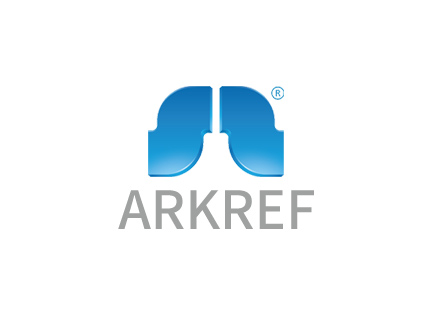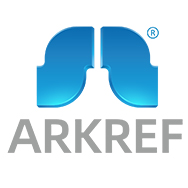A Complete Guide to Industrial Water Chillers for Manufacturing
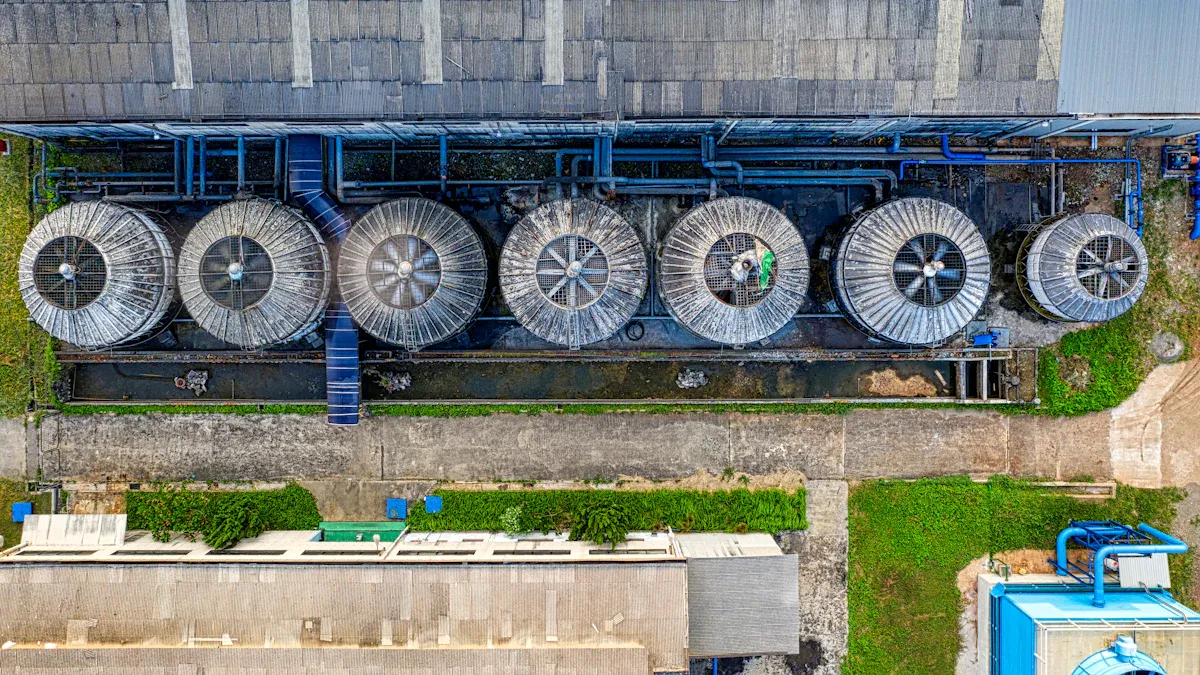
Industrial chillers are very important in factories. These machines help control heat and keep products good. When you use a water chiller, your work goes well. Fast and steady cooling helps things get made quickly. It also stops machines from breaking. There are different kinds of industrial chillers. Some are air-cooled and some are water-cooled. Each chiller works best for certain jobs. Picking, using, and caring for the right chiller helps you follow tough factory rules. This guide tells you what happens when you buy a chiller. It also helps you learn the basics about industrial chillers, process cooling, and cooling machines.
Key Takeaways
Industrial chillers help keep machines and products safe. They do this by keeping the temperature steady and working well.
Picking the right chiller type and size depends on your factory’s cooling needs. It also depends on how much space you have and your budget.
Water-cooled chillers use less energy and are good for big factories. Air-cooled chillers are easier to set up and fit in small spaces.
Doing regular maintenance and fixing problems fast helps chillers last longer. This also stops expensive downtime from happening.
Using chillers that save energy and have smart controls saves money. It also helps the environment.
What Are Industrial Chillers?
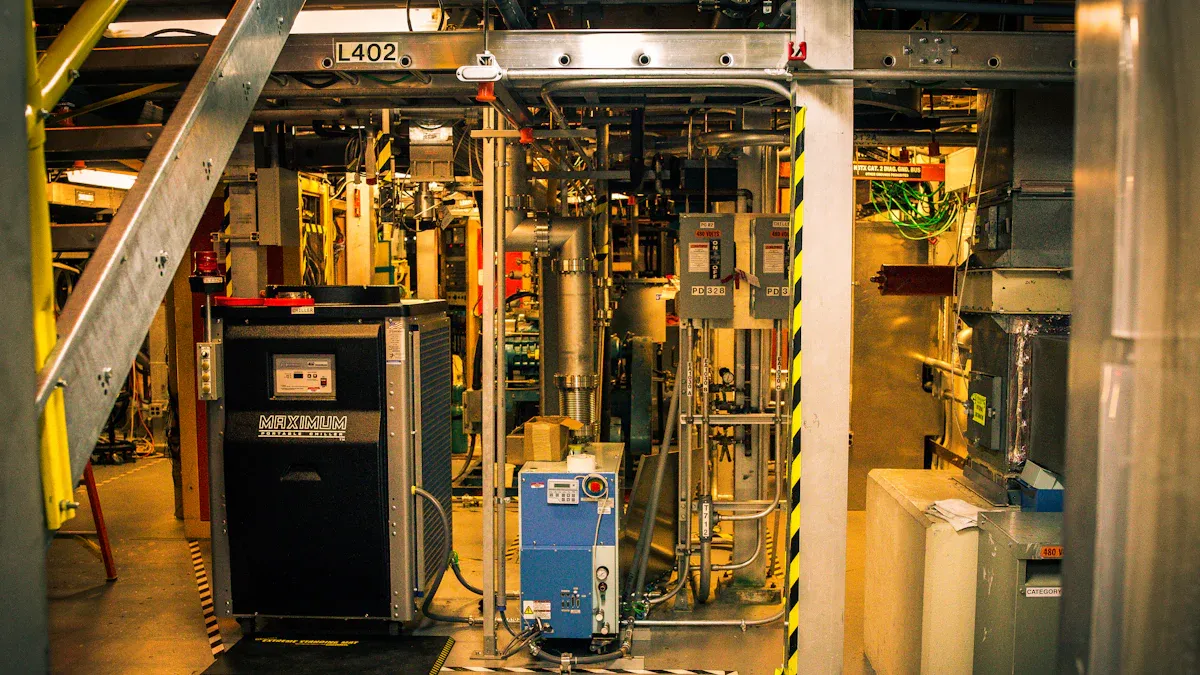
Core Functions
Industrial chillers help keep factories working well. They make sure the temperature stays just right. This is important for jobs that need steady cooling. If the temperature changes too much, machines can break or products can get ruined. Chillers keep water at the same temperature all the time. This stops heat from hurting your equipment or making products worse.
Industrial chillers give steady cooling, even if things change in your factory.
Closed-loop water chiller systems use less water, so you save money and help the planet.
Energy-saving compressors and pumps help you use less power over time.
Chillers have tools that check for problems, so you can fix things early.
You can add more chillers as your factory grows, without buying all new ones.
Parts that do not rust help chillers last longer, even in tough places.
Chillers are measured by how much water they save, how fast they pay for themselves, and how well they keep things cool. Some factories, like food or medicine, need chillers with special safety features.
Role in Manufacturing
Industrial chillers are very important in today’s factories. They keep things at the right temperature during every step. This helps you make good products every time. Some chillers, called recirculating chillers, are needed in science labs, medicine, and making computer chips. Even small changes in temperature can cause problems in these places.
New chillers use smart technology to tell you when they need fixing. This helps you stop problems before they get big. Smart chillers also use less energy, which saves you money. Chillers help machines last longer and stop them from getting too hot.
The market for chillers is getting bigger. Here are some important facts:
Statistic Category | Key Data / Insight |
|---|---|
Water-cooled chiller market share | 56.0%, preferred for energy efficiency and high-demand sectors like pharmaceuticals and manufacturing |
Air-cooled chiller growth rate | Fastest growing segment, especially in food and beverage industries |
Scroll chillers market share | Over 58.3%, favored for operational flexibility and energy efficiency, dominant in data centers |
Regional market leader | Asia-Pacific with over 46.5% market share driven by manufacturing infrastructure and industrialization |
Market CAGR | Between 4.4% to 5.8% depending on segment and forecast period |
Market size projection | Expected to reach USD 16.5 billion by 2032 |
Technological trends | IoT integration, smart chillers with real-time monitoring and predictive maintenance |
Key industries consuming chillers | Chemical, petrochemical, pharmaceutical, manufacturing, food and beverage, data centers |
Emerging trends | Eco-friendly refrigerants, brine chillers, variable speed drives, magnetic bearing technology |
You can find chillers in many places, like car factories, plastic shops, and laser work. Chillers help keep things cool, which makes your work better and faster. As factories use more robots and new tools, having good chillers is even more important for doing a great job.
How Water Chillers Work
Refrigeration Basics
You need to understand how a chiller cools water before you can use it well. The chiller uses a refrigeration cycle to remove heat from water. This cycle has four main steps. First, the compressor pushes refrigerant gas into a high-pressure state. Next, the condenser cools the gas and turns it into a liquid. The expansion valve then lowers the pressure, which makes the liquid very cold. Last, the evaporator lets the cold refrigerant absorb heat from the water. This process keeps your water cold and helps with temperature control in your factory.
Tip: If you know the basics of the refrigeration cycle, you can spot problems early and keep your chiller running smoothly.
Key Components
Every chiller has important parts that work together to keep things cool. Here are the main components you will find:
Compressor: Moves the refrigerant and starts the cooling process.
Condenser: Releases heat from the refrigerant to the air or water.
Expansion Valve: Drops the pressure and cools the refrigerant.
Evaporator: Absorbs heat from the water and cools it down.
Control Panel: Lets you set and monitor the system.
You will also see pumps and pipes that move water through the chiller. Sensors check the system and help you keep everything safe. When you know each part, you can keep your chiller in good shape and avoid downtime.
Types of Industrial Chillers
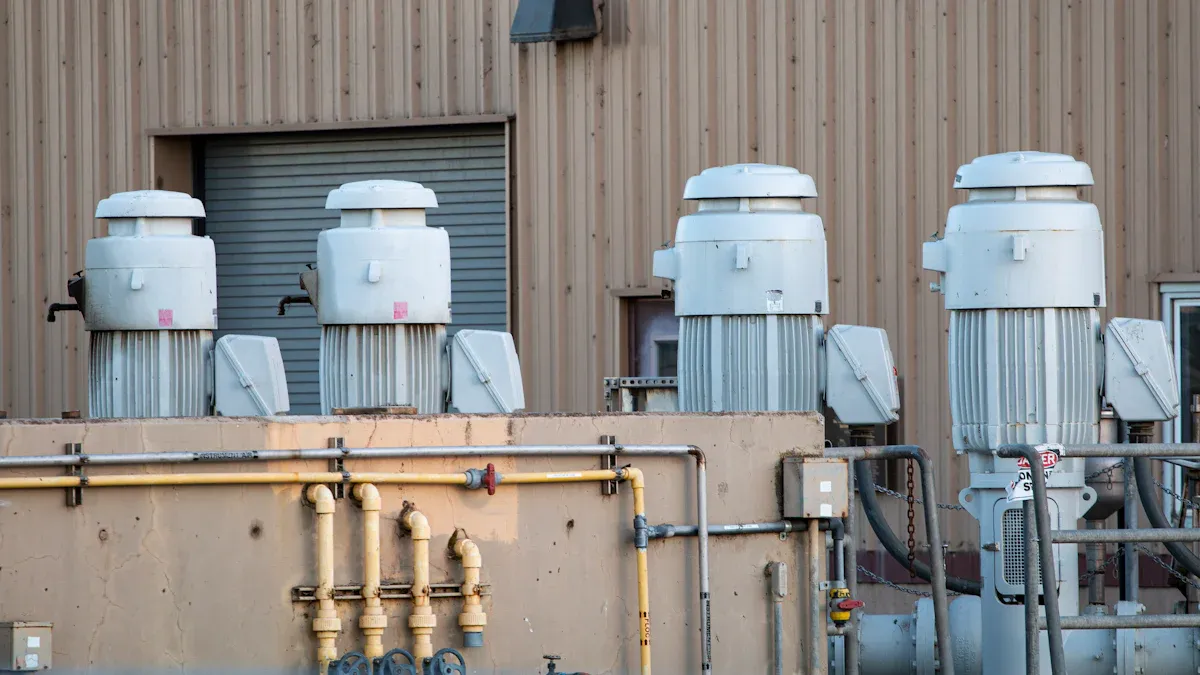
Industrial chillers come in different types. Each type is good for certain jobs in factories. You need to know what makes each chiller different. This helps you pick the best one for your work.
Water Chillers
A water chiller uses water to cool things down. You see these chillers in big factories and plants. They are good when you need cooling for a long time. You can use them for plastic, metal, or food work. These chillers connect to a cooling tower or water source. Water-cooled chillers work quietly and save energy. They do better in hot places or where there is a lot of heat.
Note: Water-cooled chillers need clean water and regular care. This stops scale and rust from hurting the system.
Glycol Chillers
Glycol chillers use water mixed with glycol to cool. Glycol keeps the system safe from freezing or breaking in cold places. You often find glycol chillers in breweries, wineries, and food plants. These places need very cold temperatures.
Here is a table that shows how glycol chillers and traditional refrigerant systems are different:
Aspect | Glycol Characteristics | Traditional Refrigerants Characteristics |
|---|---|---|
Role | Used as a helper coolant, not the main refrigerant | Main refrigerant gas or liquid used in the system |
Cooling Mechanism | Moves heat without changing from liquid to gas | Takes in heat by changing from liquid to gas and back |
Freeze Protection | Stops freezing and breaking by lowering water’s freezing point | Not needed |
Safety | Makes things safer by using less refrigerant in work areas | Some refrigerants can be unsafe or harm the planet |
Corrosion Inhibition | Has chemicals to stop pipes and parts from rusting | Needs extra steps to stop rust |
Chemical Stability | Stays stable if you take care of it, but can break down over time | How stable it is depends on the type |
Toxicity | Propylene glycol is safe for food; ethylene glycol is not safe | Some refrigerants are safe, others are not |
Environmental Impact | Does not pollute much because it does not turn into gas | Some are bad for the air or ozone layer |
Maintenance | Needs regular checks for mix, pH, and chemicals | Needs checks for leaks and right amount of refrigerant |
Glycol chillers give you freeze safety, protect from rust, and are safe. You must check the glycol mix often to keep things working well.
Brine Chillers
Brine chillers use salty water or brine to cool. You use these chillers when you need very cold temperatures. They are good for chemical plants or ice rinks. Brine chillers help you get colder than water chillers can. They work well in tough places where water chillers do not work. You need to watch for rust and leaks because brine can hurt pipes and machines.
Air-Cooled vs. Water-Cooled
You have to pick between air-cooled and water-cooled chillers. Each one has good and bad points.
Air-Cooled Chillers
Use fans to blow air and take away heat.
Easy to set up and move.
Cost less at first.
Need less care.
Good for places with little water.
Make more noise and use more power when it is hot.
Water-Cooled Chillers
Use water to take away heat.
Need a cooling tower and more pipes.
Work better for big jobs.
Quieter when running.
Cost more to buy and fix.
Need clean water and checks for rust or scale.
Tip: Pick air-cooled or water-cooled chillers based on your needs, water supply, and money. Water-cooled chillers save more energy in big factories. Air-cooled chillers are better for small spaces or places with little water.
Here are some things to remember:
Water-cooled chillers with heat recovery can save energy and cut pollution by using waste heat.
Prices can be very different for chillers that look the same, so compare before you buy.
The quality of your water changes how much care water-cooled chillers need.
Think about noise and local rules when you choose a chiller.
Some jobs need special chillers, like ones that do not spark or shake.
Pick the right chiller for your work to get the best results.
You might also see other chillers, like evaporative condensed or vapor absorption chillers. These are good for special jobs, like saving water or using waste heat.
Industrial chillers give you many choices. You need to think about your work, space, and money to pick the right one. The best chiller keeps your products safe and your machines working well.
Choosing the Right Chiller
Assessing Cooling Needs
You need to know how much cooling your factory needs. Each job in a factory has its own temperature needs. Some machines must stay cool all the time. Others only need cooling sometimes, like when working hard. When you look at industrial chillers, think about what your machines do. Also, think about how much heat they make.
Find out how much heat all your machines make.
Write down every job that needs cooling.
Decide if you want one big chiller or a few small ones.
Think about if you will need more cooling in the future.
Thermal Care’s webinar says you should check chiller size, setup, and pumps before buying. This helps you not buy a chiller that is too small or too big. The right chiller keeps your products safe and your machines working.
Tip: Make a list of your cooling needs before talking to a supplier. This helps you get better advice.
Sizing and Specifications
Picking the right size chiller is very important. If your chiller is too small, machines can get too hot. If it is too big, you waste money and energy. The chiller must match what you really need.
Factor | What to Consider |
|---|---|
Heat Load | How much heat your work makes |
Flow Rate | How much water or fluid you move |
Temperature Range | The lowest and highest temperatures needed |
Ambient Conditions | How hot or cold your factory gets |
Chiller Capacity Control | Can you change how much it cools? |
You should also check what kind of refrigerant the chiller uses. Some chillers use types that are better for the earth. Others use old types that may not follow new rules. Always look at the details for safety, how well it works, and if it lasts.
Note: Ask your supplier for help with picking the right size. They have tools to help you choose the best chiller.
Installation Factors
When you put in a chiller, you need to plan for space, power, and water. Some chillers need lots of room and strong floors. Others fit in small places. You also need to think about how easy it is to reach the chiller for fixing.
Make sure there is enough space for air and repairs.
Check if your building has the right power.
Plan for water pipes if you use water-cooled chillers.
Look at local rules for noise and pollution.
Thermal Care says you should know what will happen during setup. This means delivery, putting it in place, and testing. Good planning helps you not waste time or money.
Remember: If you can reach your chiller easily, it will last longer.
Energy Efficiency
Saving energy is good for your wallet and the earth. New chillers use less power and help you meet green goals. For example, the Neptune direct water cooling system cools with less energy and no fans. This is important in places like AI data centers, where cooling is needed a lot.
Pick chillers with variable speed drives to save power.
Choose models that can use waste heat again.
Pick chillers that use earth-friendly refrigerants.
Look for smart controls that change cooling when needed.
Cooling problems can stop work in data centers and factories. Efficient chillers help stop this and lower your bills. Companies like ATS make chillers for powerful electronics, so you have many choices for your needs.
🌱 Picking a chiller that saves energy helps you save money and care for the planet.
Chiller Operation & Maintenance
Startup & Shutdown
You need to follow steps when starting or stopping chillers. Always read the manufacturer’s instructions and think about safety. Before you start, check all power sources. Make sure backup systems like UPS or generators work. If your plant loses power, stop the process fast to protect equipment. Keep important instruments powered so they do not get damaged. When shutting down, keep steam and cooling going for a safe stop. Turn production units back on one at a time as power comes back. Quality teams should check materials that were being made. Tell your team and customers if there are any delays. Always have emergency plans, spare parts, and clear diagrams ready to help you recover fast.
Routine Maintenance
Routine maintenance helps chillers work well and last longer. You should check pumps, filters, and pipes often. Clean heat exchangers and look for leaks. Use the manufacturer’s diagrams to help you. Test safety controls and sensors to make sure they work. Write down all maintenance in a logbook. Change worn parts before they break. Good maintenance stops big problems and keeps your cooling steady.
Tip: Plan regular checks and use a checklist. This helps you find problems early and keeps your chiller working well.
Troubleshooting
If a chiller has a problem, act quickly. Look for warning lights or error codes on the control panel. Check for leaks, strange sounds, or low cooling. Use the manufacturer’s diagrams to find the issue. If you find a problem, fix it right away or call a technician. Keeping spare parts nearby helps you fix things fast. Always write down what you find and what you fix.
Cost-Saving Tips
You can save money by running chillers the right way. Use energy-saving settings and variable speed drives if you can. Keep your system clean to stop extra strain. Plan your chiller setup for easy access and upgrades. Use smart controls to change cooling when needed. Regular maintenance and quick fixes help you avoid big repair bills and downtime. When you take care of your chillers, you protect your money and keep your work going smoothly.
You have seen how chillers support your manufacturing process. Chillers keep your products safe and your machines running. When you choose the right chillers, you improve quality and save money. Chillers need regular checks and good care. You should review your chillers and look for ways to upgrade. Chillers with new features can help you meet strict rules. If you want better results, talk to experts about chillers. You can also plan a facility audit to find the best chillers for your needs. Chillers make your work easier and more reliable.
FAQ
What is the main difference between air-cooled and water-cooled chillers?
Air-cooled chillers use fans to move heat away. Water-cooled chillers use water and a cooling tower. Air-cooled chillers are easier to put in place. Water-cooled chillers work better for big factories. They also save more energy as time goes on.
How often should you perform maintenance on an industrial chiller?
You should check your chiller once a month. Clean the filters and look at the pumps. Test the controls to make sure they work. Have a technician do a full check every year. Regular care helps stop breakdowns and keeps your chiller working well.
Can you use one chiller for multiple machines?
Yes, you can use one chiller for many machines. Make sure the chiller is big enough for all your equipment. Use flow controls and the right pipes to share cooling. This setup saves space and lowers your energy bills.
What signs show your chiller needs repair?
Look for warning lights or strange sounds. Leaks are also a sign of trouble. If your chiller cools less or uses more energy, there may be a problem. Check the control panel for error codes. Fixing problems fast can stop bigger issues.
Are eco-friendly chillers available for manufacturing?
Yes, you can pick chillers that are better for the earth. These chillers use green refrigerants and save energy. Look for models with smart controls and variable speed drives. These choices help you follow green rules and lower pollution.
See Also
How To Choose The Best Industrial Water Chiller System
A Complete Guide To How Water Chiller Units Work
Proven Strategies To Maximize Walk-In Chiller Performance
